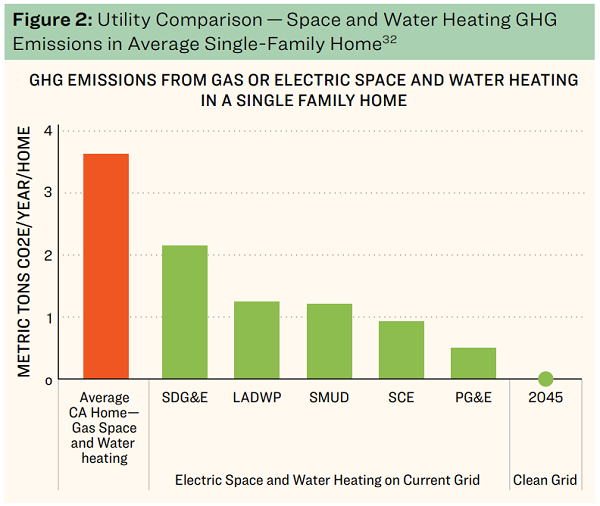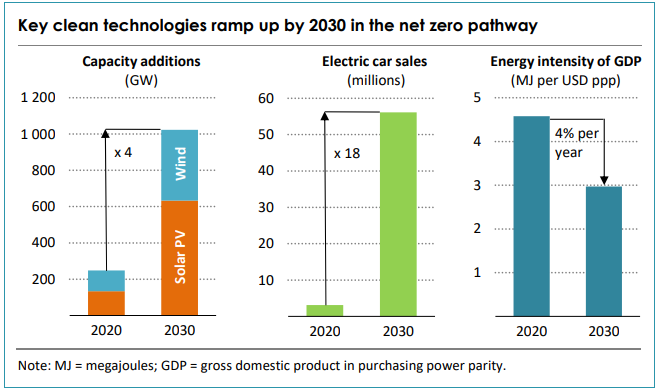Cleaner Buildings with Clean Electricity
An all-electric car: Got it. The latest electric chainsaw and lawnmower: Just ordered them from Amazon. How about the all-electric home and office building? Not yet, but proponents of “electrification” say those buildings can lead to a greener and healthier future.
Building electrification refers to the use of electric technology where fuel sources were traditionally used. It’s the oil-fired furnace or the water heater, cooking stove, or clothes dryer that uses natural gas or propane. Those appliances can be replaced with all-electric heat pumps, heat recovery chillers, induction stoves, solar thermal-assisted water heaters, ultrasonic clothes dryers, and other equipment.
The status, availability, and effectiveness of dozens of those electric technologies were recently reviewed by the New Buildings Institute and the Building Decarbonization Coalition in their “Building Electrification Technology Roadmap.”
“Although fuel-fired equipment in homes and buildings has a long history of meeting our needs, on-site gas combustion has a limited future,” said Cathy Higgins, NBI Research Director, in a news release. “Growing the market share of all-electric technologies can accelerate grid decarbonization. However, this transition will take time, so the sooner we get started the better.”

The New Buildings Institute is one of many organizations driving the effort to electrify buildings and move away from non-renewable energy sources. (Source: NBI 2020)
Researchers found that there are available technologies to fully electrify homes, commercial buildings, and higher educational/instructional buildings in the core areas of water heating, space heating, cooking, and clothes drying/laundry. Building electrification, on a widespread scale, would be critical to meeting California’s 2045 carbon neutrality goal.
“California’s buildings produce more smog-causing pollutants than cars,” said Panama Bartholomy, Director of the Building Decarbonization Coalition. “Electrification is the pathway for cleaning up our buildings sector. This report lays out a clear roadmap showing how electrification technology can help achieve public health and climate goals.”
Beginning with Berkeley, Calif., dozens of municipalities have passed ordinances to ban or restrict the use of fossil fuels in new homes. But even as some cities and states are considering new laws to encourage all-electric construction, others are passing legislation to support natural gas usage and protect the gas industry.
So far, laws to protect natural gas use (and preempt local restrictions) have been adopted in Arkansas, Arizona, Louisiana, Mississippi, Oklahoma, Tennessee and Utah, according to S&P Global Market Intelligence’s Gas Ban Monitor. Similar laws have been proposed in a dozen additional states.
A new state law in Arizona, for example, prohibits counties from enacting an ordinance or land use regulation that “has the effect of restricting a utility provider’s authority to operate or serve customers.”
The state law applies to natural gas and propane gas service, and is effectively the state’s ban on local bans.
A story in The Washington Post notes that 42 municipalities in California have already updated their building codes to restrict the use of natural gas in new buildings.
The Washington Post story quotes Marta Schantz, senior vice president of the Urban Land Institute’s Greenprint Center for Building Performance: “Logically the natural gas industry does not want to see its business end, so it’s doing what it can to keep natural gas in the utility grid mix. But long term, if cities are serious about their climate goals, electric buildings are inevitable.”
The last two years have seen changes to local building codes and other mandates to reduce carbon emissions. As a result, IMS has seen a recent increase in RFPs related to building electrification and decarbonization. IMS covers today’s RFPs/RFQs and tracks future projects through Advance Notices for its architectural, engineering, and consulting clients. Some recent projects that IMS has covered for its clients include:
* The Town of Arlington, Mass., released an RFP in July 2021 to prepare an electrification and air quality master plan for six school buildings (IMS 579274). The project will review HVAC and hot water systems, and then “identify alternatives to convert existing fossil fuel-based heating systems to all-electric systems.” The town and the schools currently use natural gas, but the goal for this project is to develop a “plan to fully electrify all school buildings while ensuring improved air quality and keeping classrooms and other educational spaces at comfortable temperatures for more effective learning.”

Significant CO2 reductions can be made by transitioning to electric heaters. (Source: Sierra Club)
* The City of Palo Alto, Calif., issued an RFP in June 2021 for consultants to implement and administer residential electrification, energy efficiency, and/or water efficiency programs or services (IMS 577909). In an April 2021 RFP, the City sought to conduct a forensic evaluation of all City buildings and develop a plan for electrification to achieve at least an 80 percent reduction in natural gas usage by 2030 (IMS 567748).
* The City of Sacramento, Calif., released an RFP in June 2021 to develop a strategy and alternative approaches for the transition of buildings from natural gas to electricity, accounting for current regulations and identifying necessary policy or regulatory changes (IMS 577819).
* The California Energy Commission released an RFP in May 2021 for technical assistance on building decarbonization market transformation, low-emissions building design, equipment to support electrification and decarbonization, and building decarbonization incentive programs (IMS 572458).
* City of Longmont, Colo., released an RFP in March 2021 for consulting services to facilitate the beneficial building electrification feasibility committee, develop a communications strategy, and help develop a building electrification plan (IMS 562748).
* The Maine Public Utilities Commission issued an RFP in March 2021 for an examination of the design and operation of the Maine Distribution Grid to accommodate distributed resources and future load growth, as well as potential future load growth from electrification to meet climate change initiatives (IMS 558749).
In addition to the Building Electrification Technology Roadmap, several other policy studies have found environmental and public health benefits from building electrification/decarbonization.

In order to achieve energy goals and reduce the impact of global climate change, significant action must be taken now. (Source: International Energy Agency, Net Zero by 2050)
The Sierra Club’s “Building Electrification Action Plan” analyzed California’s greenhouse gas emissions, gas usage, and projected benefits from electrification. A core recommendation: set 2045 as the goal for the zero-emission building sector. “The next one to five years are the critical window for California’s policymakers to facilitate a managed transition to gas-free buildings and to create a model that is centered on the needs of workers and low-income and environmental justice communities,” the report said.
And the Rocky Mountain Institute, as part of its study and coverage of building electrification, developed a set of eight key facts about moving away from burning fossil fuels in homes and businesses. The topics range from indoor air pollution to gas infrastructure costs to the economic benefits for the construction and manufacturing sectors.
“[B]uilding electrification is the most cost-effective and lowest-risk solution to phase fossil fuels out of buildings,” the story concludes. “Electrifying homes and businesses eliminates emissions – a crucial step toward a 1.5°C future – and brings an array of additional health and economic benefits. With electrification gaining momentum across the United States and cost-effective, efficient technologies like heat pumps already widely available, the future of all-electric buildings looks increasingly bright.”

